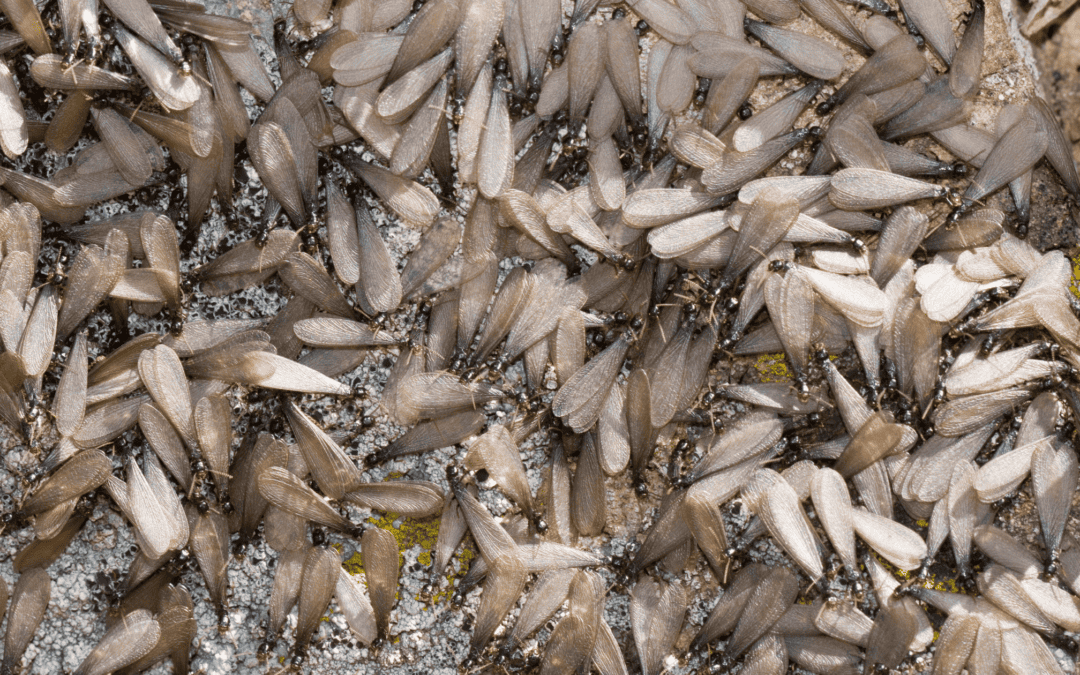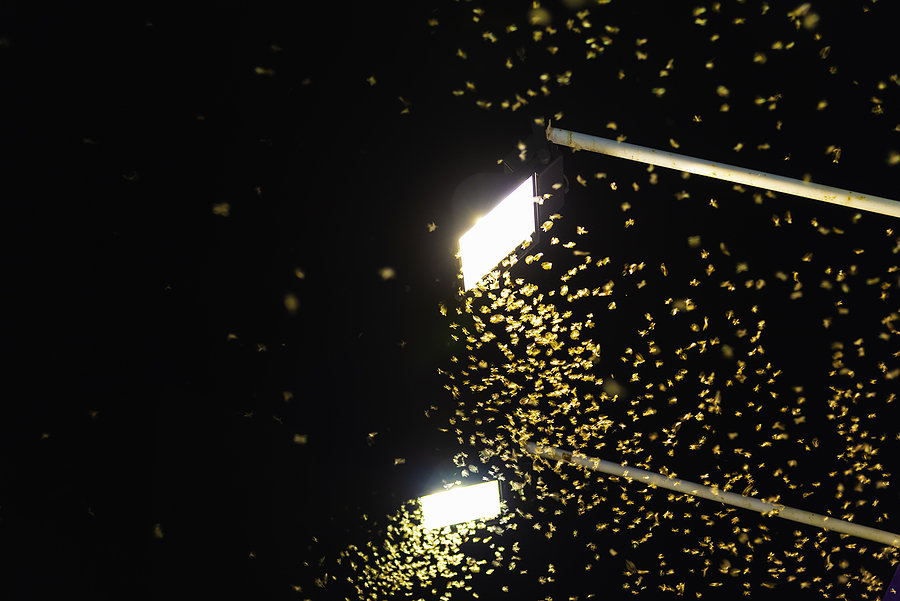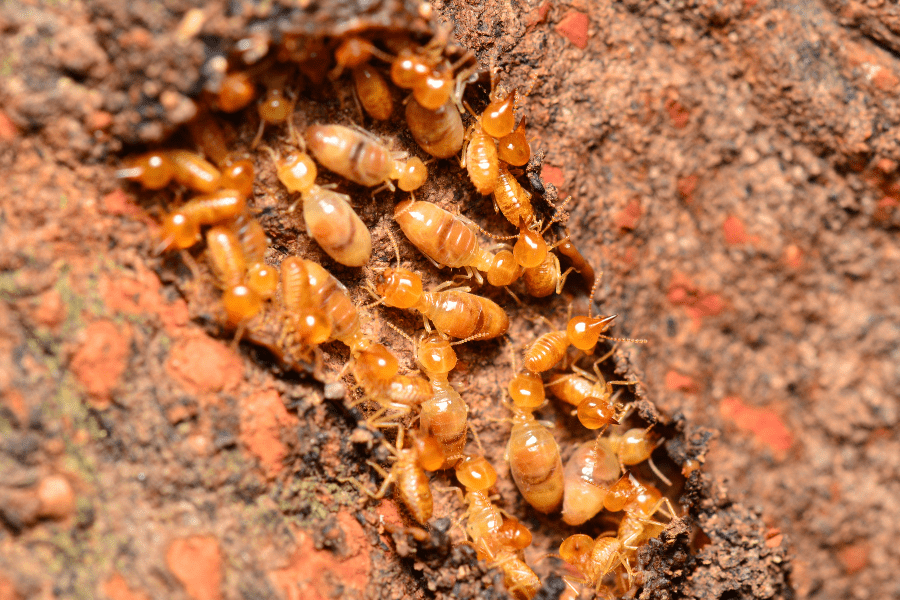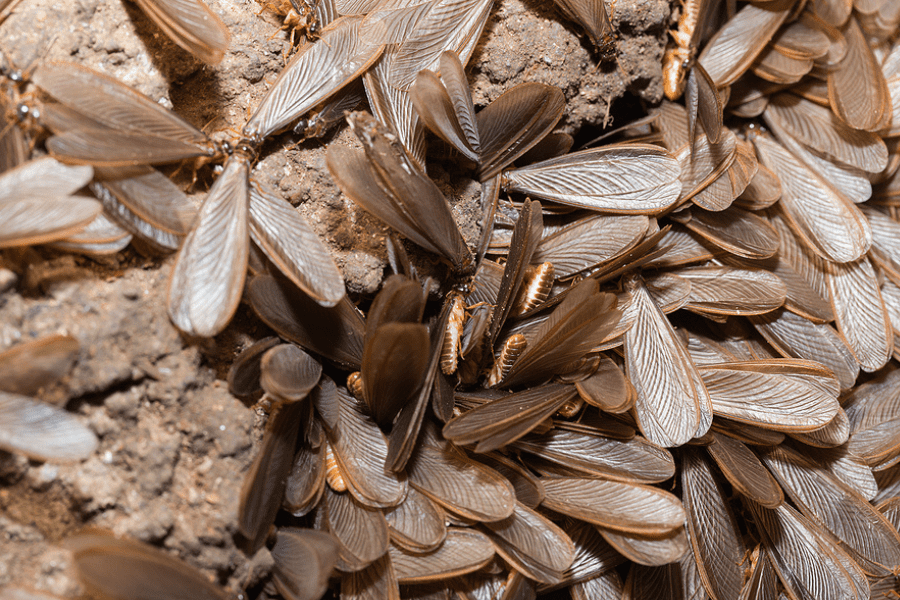READY TO GET STARTED?
REQUEST A FREE ESTIMATE
Fill out the form below or call (888) 466-7849 for a free, no-obligation estimate.

As spring approaches in Georgia, so does the dreaded termite swarming season. For homeowners, this annual event can be a cause for concern, as it signals the potential presence of destructive pests in and around their homes. In this guide, we’ll delve into what swarming termites are, when swarming season occurs, what termite swarms indicate, and crucial tips for termite prevention.
Swarming termites are reproductive members of a termite colony. These winged insects emerge from their nests in large numbers during specific times of the year to mate and establish new colonies. Their primary goal is to find a mate and locate a suitable location to start a new colony, often in or around homes.
In Georgia, termite swarming season typically occurs in the spring, between March and May. However, it can vary depending on factors such as temperature and humidity. Warm, humid conditions following rainfall trigger swarming behavior in termites, making spring the peak season for infestations.
The presence of termite swarms near or inside your home is a strong indicator of an existing termite infestation or the potential for one. Swarming termites may be found indoors near windows, doors, or light sources, as they are attracted to light. Additionally, discarded wings near windowsills or on the floor may indicate that a termite swarm has occurred.
Don’t wait until it’s too late to safeguard your home from termites. Contact a pest control company near you today for a free termite control quote and protect your investment against these destructive pests.
Being aware of termite swarming season and taking proactive measures for termite prevention are vital steps for Georgia homeowners to protect their properties. By understanding the behavior of swarming termites and implementing preventive strategies, you can ensure a termite-free home for years to come.

Swarming termites, or alates, are often seen in the spring and summer months. While they might seem alarming, these pests do not bite, sting, or chew wood. Instead, swarming termites indicate they an established termite colony is close by, which can be problematic for your home and family. But when does swarming season begin and how do you know if termites have invaded your Florida property? We breakdown what you should know about termite swarms.
Swarming season often depends on the type of termite; however, in Florida we have two common termites to lookout for: subterranean and drywood termites. Subterranean termites swarm during the spring and early summer months. Drywood termites tend to swarm in the late spring to end the summer. Termite swarms are also determined by weather, with rainstorms and overcast increasing swarm activity.
Termites swarm to both reproduce and expand their colony. Once a colony has reached its capacity of termites, the swarming process begins, leaving their existing one to start a new. The number of termites that will swarm will often depend on the type of termite species and colony size.
Preventing swarming termites starts with preventing termite colonies from establishing. There are several preventative measures you can place at your home to avoid termite swarms and keep termites from establishing, including:
If you suspect swarming termite activity nearby or a termite infestation at your home, it’s best to call your local pest control company for help. Termite professionals will give you a thorough evaluation and the best termite treatment and prevention plan.

Spring is a crucial time for identifying and dealing with termites because it’s the season for swarming. Swarming termites are a big indicator that a termite colony is nearby, which could mean an infestation is occurring. It’s better to discover you have termites earlier than later, due to the significant damage they can cause to your home.
Swarming termites are winged adult termites that mature and fly away from their colonies to continue reproducing. Termite swarming begins at different times of the year depending on the type of termite, but they all usually begin when the weather begins warming up following a significant rain event. The one type of termite that typically swarms first is known as subterranean termites.
Because termites eat wood from the inside out, termite damage often goes undetected for long periods of time. Often in fact, by the time signs of termites appear, colonies are well established, and significant damage has already been done. If you begin spotting swarming termites, keep an eye out for other signs of termites, like these below:
If you suspect you have a termite problem or if you spot signs of a termite infestation, contact a professional termite control company who can provide you with a thorough termite inspection and a comprehensive termite protection and treatment plan.

The new year has begun and although the weather is chilly now, the luxuries of living in the south typically means that warmer weather appears sooner than later. This means that termite swarming season is just around the corner, with the earliest swarms beginning in February. Let’s break down what to expect this swarming season.
Termite swarmers, often mistaken for winged ants, are most active during the spring months, when they fly away from their colony to reproduce. These swarmers are attracted to bright, light areas often seen around doors and windows in homes. Fortunately, they don’t cause wood damage, but seeing a group of them around your property typically means a colony is nearby.
The southeastern region of the United States is home to a variety of termites, including the subterranean, drywood, and Formosan species. Subterranean is the most common type of termite found in the southeast. They live underground in colonies that can get up to two million members. They are also known to be found in moist, secluded areas above ground. With their hard, saw-toothed jaws that work like shears, they are known to cause significant damage to properties.
If you suspect termite swarming activity or just want to get a step ahead at termite prevention, contact your local pest control company and schedule your free inspection.

It’s Termite Awareness Week, and termites are a known threat to southern homeowners. Termites can cause more than 5 million dollars in property damage throughout the United States, and it is normal for this damage not to be covered by homeowner’s insurance policies. Before the damage gets out of control, look for termite signs and consider getting a preventative termite treatment and warranty from professional help.
One of the first signs that termites are near is if you encounter swarmers near your home. Although swarmers do not cause wood damage, they do indicate that a colony is nearby. If you notice swarmers, it’s best to take immediate action and have a local termite control company take a look.
Another tell-tale sign that termites are close by is the presence of mud tubes or tunnels along the foundation of your home. Termites use mud tubes to keep moisture when traveling to and from their colony and your home.
Some other signs of termites that you may notice are:
Even if you do not find signs of termites, now is still the perfect time to get preventative termite protection! With the Sentricon Always Active bait system, you’ll experience 24/7 termite protection, annual inspections, a lifetime termite warranty, and more! Reach out to your local pest control company to help identify the type of termite and recommendations on the best treatment plan.